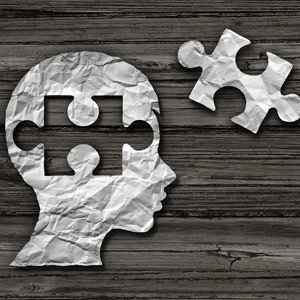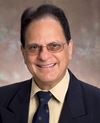Education: Let’s Put Some STEAM into STEM

Successful or happy—if you have to choose one of these two adjectives for your child, which one would you pick? Between these two alternatives, which one is the horse and which one, the cart? Read on for some freewheeling insights on stereotyped parental expectations, the pros and cons of STEM-based education, and what we can do to build adults for a better tomorrow.
We view genetically modified vegetables and hormone-fed chicken with suspicion and bestow benign approval upon organic produce (including misshapen veggies!) and slow cooking. Why then, do so many otherwise sensible and “right thinking” people approve the artificial and rushed “ripening” of their children? Should we encourage a formula-fed success or let them naturally mature to their full potential in a field of their choosing?
Consider this. “Rapidly progressive” may sound nice, but in medical parlance, it is a phrase that’s employed to describe some terminal illnesses. A pediatrician, on the other hand, observing a child’s milestones, will use the term “appropriate for the age,” meaning that the child’s growth is neither speedy nor retarded, but just right for a particular age. When it comes to our children’s academic growth however, all bets are off. A high achiever, always engaged in school work with little or no time for play or socializing, is widely appreciated. A graduating student whose average age is below that of his classmates is looked upon with extra pride. As adults, however, such early graduating students have expressed unhappiness that their physical, mental, and emotional growth was out of sync with that of their classmates.
What do you expect to achieve when your children are submerged in course work outside school hours? Will that lead them more securely to success and/ or happiness?
Having been a child, parent, and grandparent, I fully empathize with the view that shaping our children’s future is a hard task. With each generation, the process gets harder and more complex, especially with career options multiplying like rabbits!
Going with the flow
I am encouraged by this formidable diversity of work opportunities. To have many options is always better. As a young man in India, only two professional options were available to me—engineering and
medicine. Those who pursued pathways other than these two were looked down upon as examples of
partial or complete academic failures by the society of those times.
Given the thousands of students desperately applying to medical school in pursuit of future happiness, I wonder if what we are holding steadily as a telescope to view the distant stars is really a kaleidoscope, one that needs to be seen against the light of the earth, handled with a continuous, gentle rotation to appreciate all its changing designs.
When my older daughter expressed her interest in a medical career, I advised her to join Grady Memorial Hospital as a volunteer to understand the nitty-gritty of the profession. At the end of her stint, she realized that while she liked the profession, she had too many other interests which she would be unable to nurture if she committed herself to a career in medicine. My younger daughter, who was passionate about jazz dancing, pursued that as a career and continues to do so. I learned to accept that our children need not choose to cast themselves in our mold, but can and should tread a path of their choice to fulfil their own dreams.
Subsequently, I have learned newer lessons. One is that professions go through a rotational popularity, each one having its share of 15-minute fame. Should we push our children to succumb to this short-lived idea of achievement? On the contrary, a young person who loves her work will never question the validity of her choice. Rather than the outer glow of the profession, the inner glow of one’s conviction is what will impact an individual’s professional path. I also learned that our children are not particularly impressed by the steadily and spectacularly rising index of parental wealth and success. That is why we see many physicians changing their career after spending an enormous amount of time and money being trained as physicians. Human traditions are mounted on a wheel rarely charting a linear course. Our children are bound to dig in different directions.
STEM vs. STEAM
An adequate grounding in STEM (Science, Technology, Engineering, and Math) is a prerequisite for the world we live in and the emphasis on STEM is well in place. But will STEM alone suffice to guide young people through life? How do we inculcate those elusive qualities like values and ethics that go towards building just, tolerant, and compassionate societies? That’s what the ‘A’ in STEAM stands for—(Liberal) Art, which embodies the spectrum of all study and activities that nurture civilization and promote the essence of life. The seeds of this realization have already been understood and assimilated into academia. In medicine, for example, a concerted effort is being made to include the study of ethics and spirituality in curricula. Science, when segregated from the humanities, will not sustain us as thoughtful and caring social beings. An unsprouted STEM and an untargeted STEAM are both futile unless well synchronized functionally.
I admire when I see our emerging generation of young people courageously delving into politics, show business, Western music, and many untrodden paths that their parental generation will find dreadfully risky. All changes raise a risk but also open unseen opportunities. That is the philosophy on which this country is running.
Let us therefore offer a holistic life to our children. SAT scores are only one of several challenges they will face, growing up. To thrive in diverse milieus— classroom, dormitory, professional world, society, and their own future family—is also what they have to be prepared for. It is, therefore, essential that they are exposed to a variety of experiences during childhood. Ground sports, water sports, winter sports, hiking, independent travel, museum tours, concerts, and work at home, besides school homework, are just some of the examples that will prepare them for their life ahead. A good balance of these activities may also help curtail the problem of “digital disease” that afflicts so many young people these days who are locked up in their hand-held devices.
Education is not a mass of information bulging at the seams of the school bag. Its spectrum is limitless. Given the opportunity, our children are quite capable of embracing that spectrum.

Bhagirath Majmudar recently retired after 45 years of service at Grady and Emory University Hospitals, from positions of professor of pathology and associate professor of obstetrics/gynecology. He is also a Sanskrit scholar, a Hindu priest, and a poet, writer, playwright, and performer.
Enjoyed reading Khabar magazine? Subscribe to Khabar and get a full digital copy of this Indian-American community magazine.
blog comments powered by Disqus












